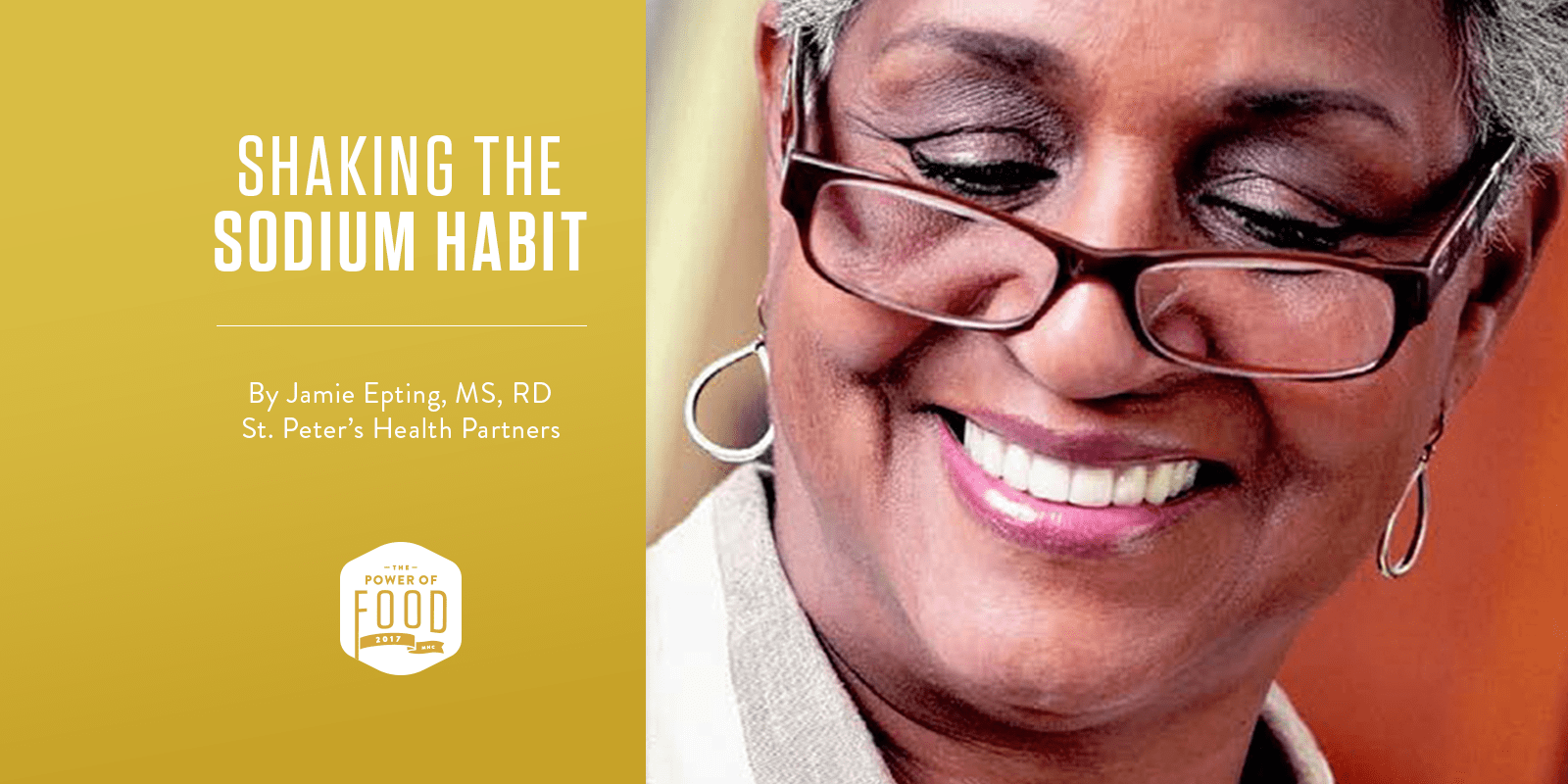Shake the sodium habit and be on your way to a heart healthy life

High blood pressure is a major health problem, contributing to strokes, kidney failure, congestive heart failure and atrial fibrillation. And at least a third of hypertension cases can be attributed in large part to a high-sodium diet.
A healthy level of sodium in the average diet, according to the Academy of Nutrition and Dietetics, is between 1,500 and 2,000 milligrams a day. Persons with high blood pressure, diabetes, chronic kidney disease and anyone who is over age 50 or African-American, should limit themselves to 1,500 milligrams or less a day.
You may already be checking labels for saturated and trans fats as part of a heart-healthy diet, but don’t forget to check the sodium content. In salt-sensitive individuals, sodium tends to keep excess fluids in the body, increasing blood pressure and putting an additional burden on the heart.
Read nutrition labels to find out how much sodium is in one serving of a food and keep in mind:
- Select foods with 140 milligrams (mg) of sodium or less per serving.
- Foods with more than 300 milligrams (mg) of sodium per serving may not fit into a reduced-sodium meal plan.
- If you eat more than one serving that means more sodium.
Studies have shown salt is addiction-forming. If you’re accustomed to salting your food, try using a salt-free seasoning mix or other herbs or spices instead. You can also use salt-free alternatives like lemon juice and vinegar to add flavor. By making a conscious effort to reduce the amount of salt you use for cooking and at the table, you will soon find that you need less.
Using less salt at the table and in the kitchen is critical, as sodium levels in most processed foods – in the form of monosodium glutamate, sodium nitrite, sodium saccharin, baking soda and sodium benzoate – are very high.
In addition, if you buy the majority of your food from a restaurant, fast food outlet, or deli counter, you are likely swimming in a sea of sodium. According to the Centers for Disease Control, about 77 percent of an average American’s sodium intake comes from processed and restaurant foods.
The best approach is to focus on a change in eating habits. Be mindful to:
- Use less salt, both at the table and when cooking.
- Avoid processed foods, especially processed meats such as deli meat, bacon, sausage, and hot dogs.
- Choose fresh or frozen fruits and vegetables that are naturally low in sodium and avoid canned vegetables and those frozen in sauce.
- Be a smart shopper. Look for food packages that say “salt-free” or “sodium-free.”
- Add flavors to your food without adding sodium. Try lemon juice, lime juice, fruit juice or vinegar, or a variety of dry and fresh herbs.
Shaking the sodium habit means more than just cutting back on salt. It means a positive approach to eating for overall good health!
This article was also published in the February 1st issue of LiveSmart, a community service page that publishes each Wednesday in the Times Union, the leading newspaper in New York’s Capital Region. LiveSmart is a collaboration between St. Peter’s Health Partners; the local NBC affiliate WNYT-NewsChannel 13; local supermarket chain Price Chopper; and the Times Union to identify and address public health/wellness issues in the Capital Region, as well as provide a forum for education and discussion about those issues.
For more great health tips visit: http://www.sphp.com



